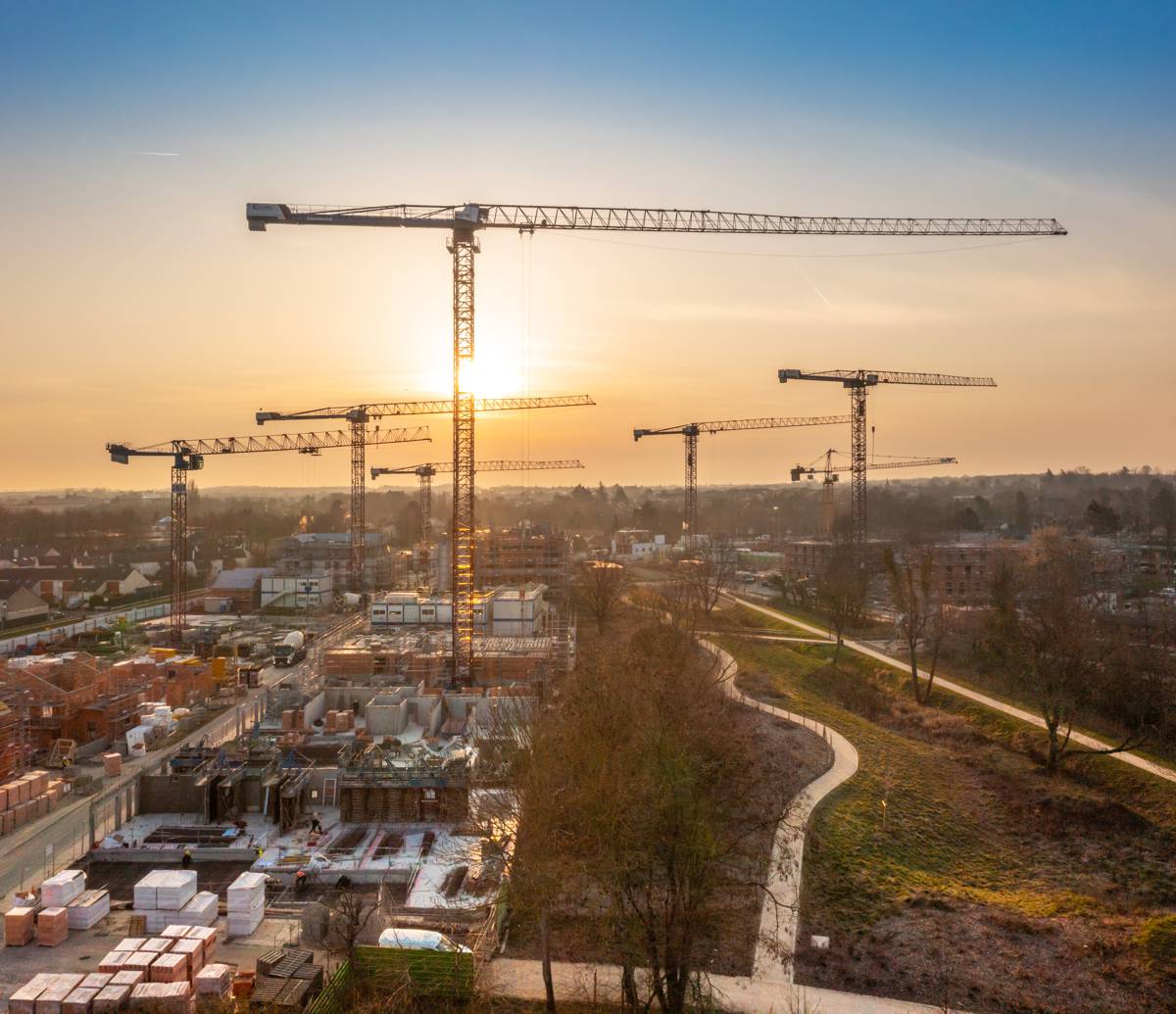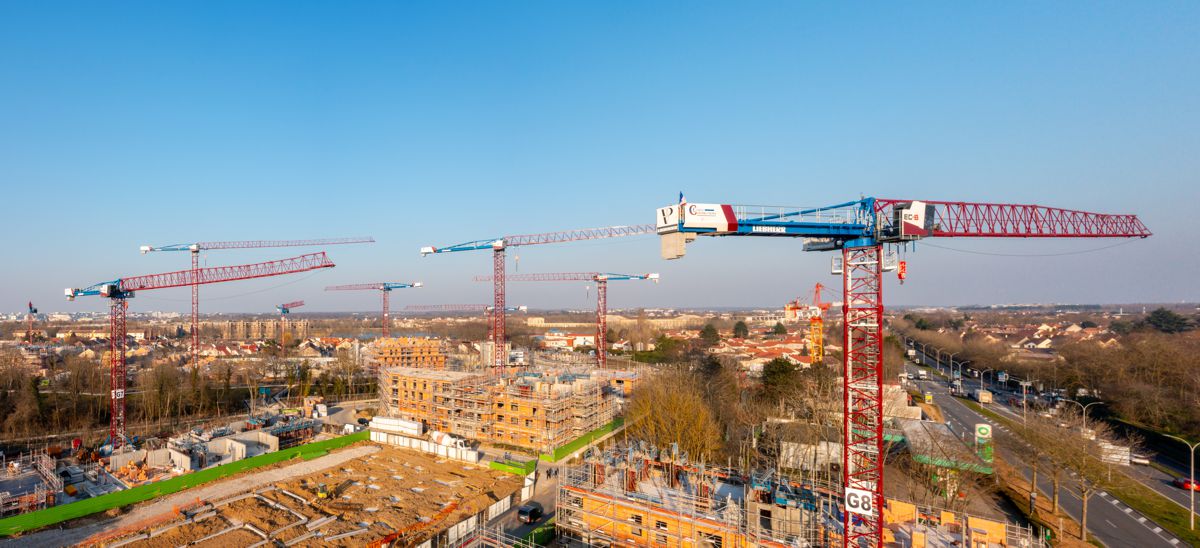Liebherr Tower Cranes building an eco-friendly District in France
An eco-friendly residential district with energy-efficient buildings, a rainwater treatment system, and a local recreation area is currently being built on ten hectares of land not far from the lake “Lac de la Sourderie” in the French municipality of Voisins-le-Bretonneux.

Housing, retail stores and public facilities are planned
Seven Liebherr tower cranes handled the movement of panels, concrete parts and formwork: one 340 EC-B 16, three 340 EC-B 12s and three 205 EC-B 10s. These all have blue and red paintwork to match the colours of the construction company responsible, Cobat Constructions.
The buildings are due to be completed in 2024 and will then provide space for over 500 apartments, commercial premises and public facilities including a crèche, a community centre and a sports centre.

Hook heights from 40 to 75 metres
Work began in April 2021 and the cranes arrived on site in June 2022. The highest hook height measured in at 75 metres with a maximum jib length of 52.68 metres (340 EC-B 12) while the lowest hook height was 40 metres (205 EC-B 10). The shortest jib length used on site was 36.16 metres (340 EC-B 12).
The cranes are designed to lift up to 16 tonnes (340 EC-B 16) and twelve tonnes (340 EC-B 12). Both crane models achieve the same maximum hook height (84.7 metres) and radius (78 metres). The 340 EC-B 16 has a lifting capacity of 2,100 kilograms at maximum radius, while the 340 EC-B 12 can lift a further 300 kilograms.
The 205 EC-B 10 is able to work at a maximum height of 68.2 metres and is capable of lifting up to ten tonnes. It can reach a maximum radius of 65 metres and is able to lift up to 2,100 kilograms at its jib head.

Historic canal at the heart of the district
Parc du Lac is situated in the Île-de-France region, 25 kilometres from Paris and ten kilometres from Versailles. The canal that runs through the neighbourhood is a remnant of the former water supply system used for the Palace of Versailles’ gardens.
The well-preserved historic system once featured a network of around 200 kilometres of canals and aqueducts that channelled rainwater from the surrounding lakes to the palace’s basins and fountains. It utilised primary and secondary canals and was the only system of its kind in the world at that time.
Today, the remaining canal forms the heart of the Parc-du-Lac district.




















